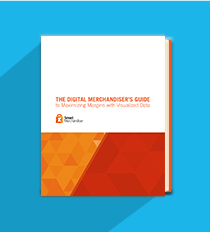
There are few images more illustrative of urban decay than the lone, overturned abandoned shopping cart, tossed aside against broken concrete with no one around to push it, fill it or even set it aright.
Likewise, there are few instances more illustrative of the digital merchandiser's love/hate relationship with the fickle online shopper than the abandoned shopping carts left far too often at the end of an otherwise—seemingly—mutually beneficial shopping experience.
With shopping cart abandonment rates around the web showing that almost seven out of 10 shoppers change their minds at the checkout phase of an online purchase, it's not hard to see why improving checkout usability is at the top of many online retailers' to-do lists.
Here are four ways you can successfully un-abandon your online store's shopping carts and improve checkout usability.
1. Be Hospitable to Guests
While it doesn't make targeting them for marketing campaigns in the future very easy, some of the people shopping at your online store do not want to create an account and have you store their personal data, send them emails and otherwise remind them of that one time they bought something from you.
Guest checkout that doesn’t require a sign-in and password is an essential part of improving checkout usability, and if you aren't already utilizing it, you're losing customers.
2. Tell The Truth Early and Often
Unexpectedly high shipping and handling costs will cause many shoppers to abandon their carts once they have them in the virtual checkout line. In fact, high shipping costs are the number one reason shoppers give for abandoning carts, and more than a third of shoppers say the ill-timed revelation of that extra cost at checkout was the source for leaving potential purchases behind.
Avoid the effects of checkout line sticker shock by giving the customer at least an estimate of shipping-related costs earlier on in the shopping experience, before they get too far into the purchasing process.
3. Consider Consolidating to One Page
The average checkout process has multiple steps and multiple pages to keep the process—ideally—simple for the user. But because so many steps are required, the process is rife with abandonment potential.
Where the process can really fall short is if a page takes too long to load, an error occurs or information is entered incorrectly, causing the whole endeavor to feel like a waste of time. Beat those troubles to the punch by consolidating your checkout to a single page like the French site, Charmandising, and maybe you'll increase your sales by 67 percent like they did.
4. Go Mobile
Mobile commerce isn't just here to stay; it's here to dominate, as more and more users turn to the mobile web for everything from browsing to streaming and shopping. Even if your site is responsively designed, your checkout process may not pass mobile muster.
Make use of progressive enhancement so that regardless of the device, browser or Internet connection involved in your checkout line, poor mobile performance won't be an issue.
Good checkout usability is as important to a digital merchandiser's success as is having an online store at all, and while the quest to reduce shopping cart abandonment rates will require more than the four tips above, they’re a solid place to start.
For more information on how to improve conversion rates, download The Digital Merchandiser's Guide to Maximizing Margins with Visualized Data eBook.


